I have been trading cryptocurrencies for 10 years, a professional trader for 8 years, over 2000 days. From initially entering the market with 200,000 capital, over the years, I have experienced various pressures, pains, and confusion. Ultimately, I gained a profound understanding, simplified trading techniques, and in just three years, easily withdrew 48 million in the crypto world!
Achieving continuous and stable profits, I have managed to support my family through trading! Currently, I have also profited enough to buy a house in Shenzhen, two cars, and have several savings and assets.
I have done long-term, short-term, ultra-short, and swing trading; basically, I have tried almost every type of method.
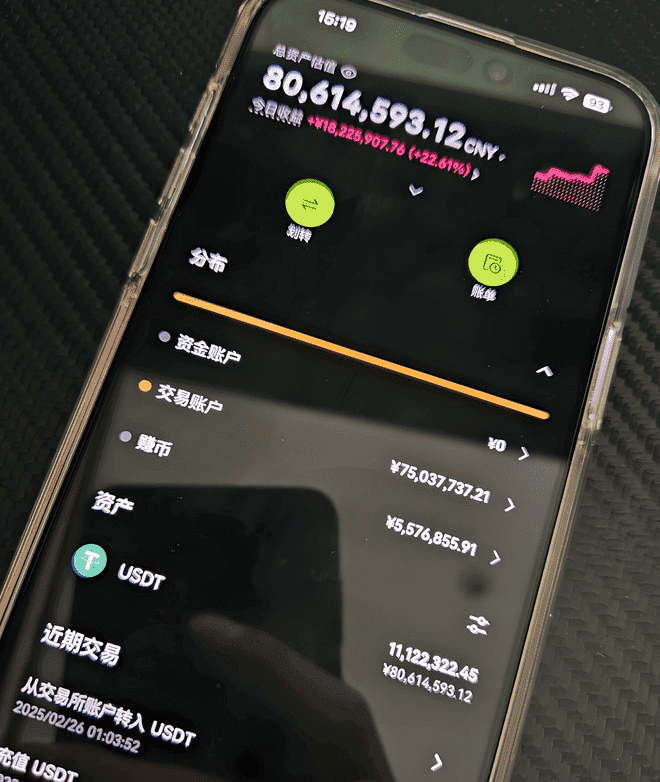 Before discussing techniques, here are some suggestions for newcomers in the crypto world:
Before discussing techniques, here are some suggestions for newcomers in the crypto world:
1, don't trade during the day; it's best to trade at night. Firstly, daytime trading can be influenced by restlessness, and secondly, it's hard to see the situation clearly.
2, after making a profit, do not chase trades; take profit. Never think about making a second profit after already making one, or you risk losing everything easily.
3, going long is beneficial for going short; you must not short unless absolutely necessary.
4, if you have time to watch the market, don’t set stop losses or take profits. This is to prevent minor fluctuations from triggering stop-loss prices and leading to forced liquidation, which would affect greater profits. If you don’t have time to watch, you must set it to avoid large losses caused by sudden spikes, even down to zero.
5, the goal of trading is to cash out. After making a profit, regularly transfer a portion to your capital account or withdraw it. Because human desire is endless, once you make a profit, you want to make more, and end up putting everything back into the market, resulting in total losses (my personal experience). Also, if you continuously lose, don’t add more U, control your mindset.
6, for short-term trading, look at the 1-hour K-line; go long on a second-step rise and go short on a second-step drop. When encountering consolidation, if the future trend is unclear, look at the 4-hour and daily K-lines to decide whether to go long or short. Also, set your take profit and stop loss properly.
7, don't put all your eggs in one basket, try to separate your funds, and take multiple positions in different directions.
Remember: there are many market opportunities, the key is the patience to stick to the rules. Follow these few principles, and after three months you will find that making short-term profits is not as difficult as it seems.
Here's a question: why do others' trading systems make money, yet when you use them, they turn into losses?
1, seeing does not equal knowing.
Why is it that others’ trading systems are stable and profitable, yet when you use them, they turn into losses? This question is actually easy to answer, it’s like: why do I see such beautiful money trees at the flower market, but when I buy one and take it home, it dies in a few days? Why do other people’s pets do so well, while mine either get lost or fall ill and pass away? Why is the IKEA model room so tidy, but the same cabinet I bought becomes more and more disorganized? Why can the golden hoop rod be wielded effortlessly in Sun Wukong's hands, yet I can’t even lift it... Now do you understand why others’ trading systems are stable and profitable, while yours becomes a loss?
Because you 'saw it,' but it doesn’t mean you truly 'know' it. What does that mean?
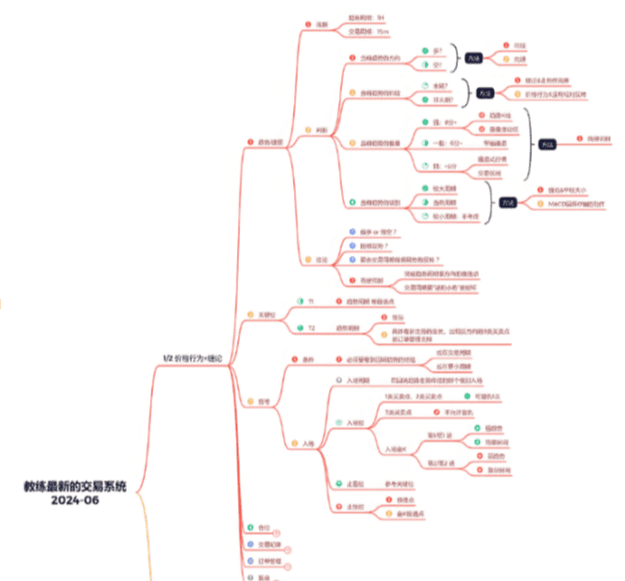 (Figure 1)
(Figure 1)
For example, in the free series of videos I released last June from 0 to 1 (【Issue 164】Panda Coach's personal trading system revealed), I publicly shared a trading system with a relatively high win rate. It mentioned that when filtering trends, I only consider trends with 'energy above 8 points' to follow, and I also clarified what 'energy above 8 points' means later. (See Figure 1)
That is ‘multiple trend K-lines’ and ‘low overlap of K-lines’. I think I’ve made myself very clear, yet some people still misunderstand.
2, what is a trend with energy above 8 points?
 (Figure 2)
(Figure 2)
For example, let’s look at this case; this is the 20-minute chart of BTC. I am a day trader, and the 20-minute chart is my trend cycle. (See Figure 2)
 (Figure 3)
(Figure 3)
Let’s take a look at the uptrend A marked by the yellow arrow; if you directly use my trading system, you might easily think that this uptrend A meets the criteria of 'energy above 8 points'. (See Figure 3)
 (Figure 4)
(Figure 4)
Because you see that this trend mostly consists of trend K-lines, and the overlap of these K-lines is also very low, and the three moving averages tell us it’s a bullish arrangement, then you decide to go long on this 'momentum' and prepare to buy in the white area. (See Figure 4)
 (Figure 5)
(Figure 5)
On the surface, there seems to be no problem, but it resulted in a stop loss. So where is the problem? It lies in the fact that this uptrend A cannot be followed at all. (See Figure 5)
 (Figure 6)
(Figure 6)
Because in my opinion, it doesn't belong to 'energy above 8 points.' (See Figure 6)
Because on the surface, this uptrend seems to consist mostly of trend K-lines, and the overlap doesn’t seem high, but it often moves 3 steps forward and 2 steps back; essentially, it’s still a wide channel market with insufficient bullish energy. Prices need to at least drop back to the channel's starting point. Smart money plays short-term trades in such a pattern and isn’t prepared to push prices much higher, so I would rate such a market as below 6 in my mind.
So you say, you used my trading system directly and lost money; who should be blamed, me or yourself?
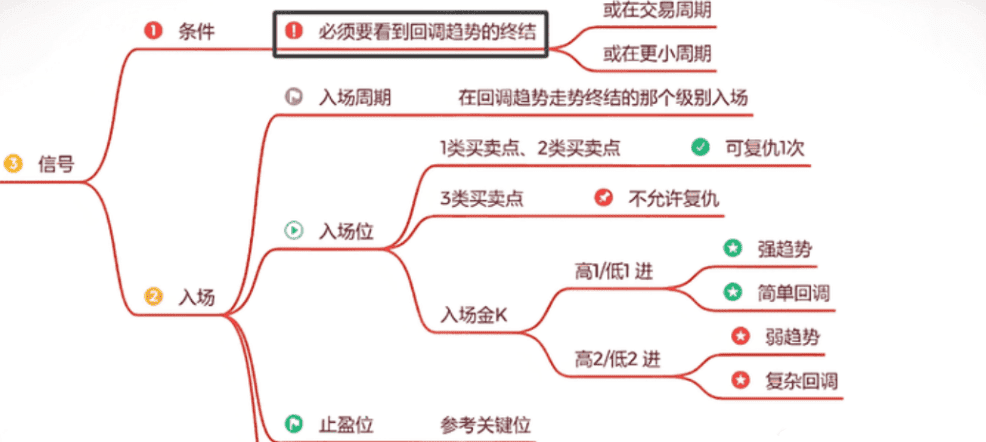 (Figure 7)
(Figure 7)
For example, in this case, when entering at step 3, I clearly stated that the entry condition is 'you must see the end of the pullback trend' to enter; otherwise, all subsequent actions are out of the question. (See Figure 7)
3, what is the end of seeing a pullback?

(Figure 8)
When we enter the 5-minute trading cycle, when the price is about to reach your ambush position, which is near the white box! (See Figure 8)
 (Figure 9)
(Figure 9)
You believe that a bottom formation has appeared here, which proves that the pullback B has ended. (See Figure 9)
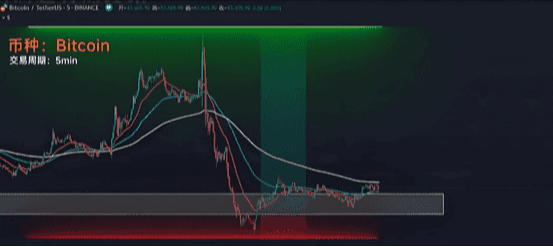 (Figure 10)
(Figure 10)
You can enter a long position at market price, placing the stop loss at the bottom of the golden K and the take profit at the extreme point of the trend cycle. (See Figure 10)
 (Figure 11)
(Figure 11)
On the surface, there seems to be no problem, but it resulted in a stop loss. (See Figure 11)
 (Figure 12)
(Figure 12)
So where is the problem? The issue lies in the fact that this decline and pullback B hasn’t finished at all. (See Figure 12)
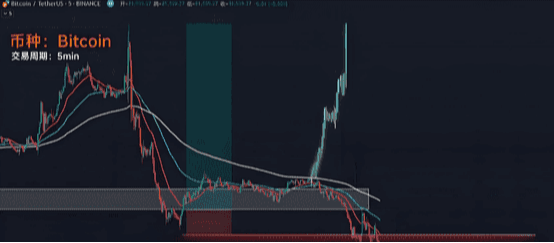 (Figure 13)
(Figure 13)
This is clearly a 1-minute level drop, at most followed by a 1-minute rise, but what we want to get into is at least a 5-minute level rise, and we expect it to grow into a 20-minute rising trend of our trend cycle. (See Figure 13)
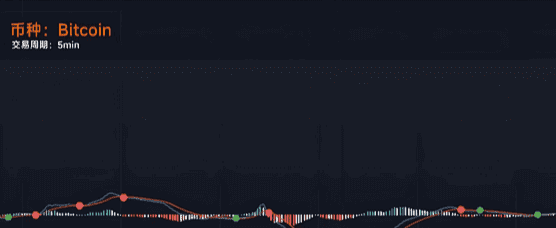 (Figure 14)
(Figure 14)
Additionally, isn’t it obvious if you look at MACD? The pullback B didn’t even diverge at all. (See Figure 14)
 (Figure 15)
(Figure 15)
So even if I want to enter, it would be at position 2 to go long. Even if the subsequent market does not hit my take profit, it still gives me ample order management opportunities and time to exit. Moreover, we’ve discussed that for this market, I wouldn’t go long at all. (See Figure 15)
So you see, what seems like a simple trading system can lead to execution errors if you misunderstand it slightly. Rome wasn’t built in a day, and neither is a house built in a day. Trading is a combination of skills; if you haven’t even figured out how to mix cement, lay bricks, and build a foundation, how can you possibly construct a solid house?
4, what you think you know is not actually knowing.
Many times, what you think is 'knowing' is merely your perception; it doesn’t mean you really know. That's why many people often say they clearly know but can't implement it.
It’s like you know 'staying up late is harmful to health,' but you don’t know the pain of being filled with tubes after getting sick, you don’t know the anxiety and stress of your family when you’re lying in ICU, you don’t know the experience of losing all your hair overnight due to chemotherapy after getting cancer, so you don’t really know 'staying up late is harmful to health';
It’s like you’ve heard that durian is delicious but you’ve never tried it, so you don’t really know; it’s like you’ve heard that skydiving is thrilling but you’ve never truly jumped out of a plane, so you still don’t know; it’s like you’ve heard that falling in love can make one dizzy, but you’ve never truly loved someone, so you still don’t know;
It’s like you’ve heard that someone's trading system has a high win rate, but you’ve never reviewed it or tested it yourself, so you still don’t know... So, going back to the initial question, 'why are others' trading systems stable and profitable while mine turns into losses,' the question itself has issues.
It’s like when I was a programmer, I hated it when clients brought in a system source code they bought for a few bucks somewhere, saying 'this system is very simple, just modify this code and it can go live.......' I really don’t have the time to study that terrible code sent over; it’s better for me to write it myself. The time spent on refactoring and redeveloping an unfamiliar old codebase is the same, if not more than the former.
The same goes for the trading market; if you over-simplify the process of making money, stable profits in the trading market are definitely not simply reliant on having a lousy trading system. The trading system is just the result; the process of reviewing day and night, continuously backtesting, and refining a trading system that belongs to you and suits you is what truly matters.
There is no best trading system in the world, only the most suitable mentor.
It’s like we didn’t go to university just for a worthless diploma. That diploma is just a tool, and what we truly want is the 'path'! After all, when it comes down to it, what truly determines the gap in life always revolves around the path, method, and tool!
Even the most diligent fisherman wouldn’t go out to sea in stormy weather; instead, they would carefully protect their fishing boat, knowing that this season will pass, and a sunny day will come! Xiao Yue teaches you to fish and also to fish sustainably. The door to the crypto world is always open; go with the flow to have a flowing life, and keep it in mind!